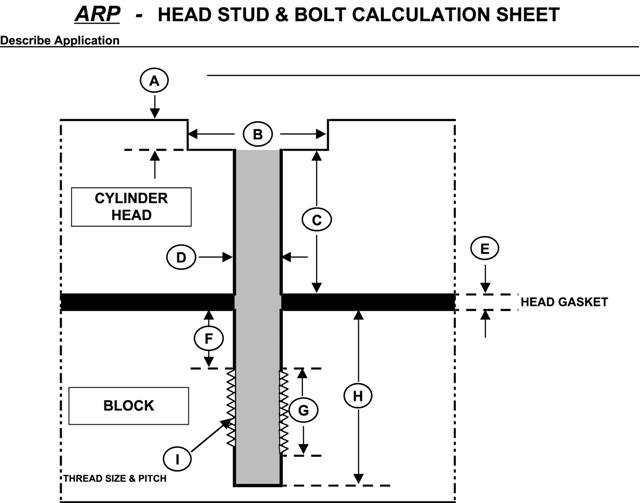The fasteners we are concerned with in our old Ford engines are bolts, studs, nuts, washers and a few cotter keys.
Ford was usually ahead of other contemporary manufacturers in metallurgy. The connecting rods with their integral studs are an example. Most of the fasteners used in the Flathead V-8s are equivalent to a current Grade 5.
 When Ford changed head fasteners from studs and nuts to bolts, many of the bolts were marked as Grade 5, some as Grade 6. The standard marking for Grade 5 is three lines radiating from the center; for Grade 6 it is four lines. Grade 5 is medium carbon steel, quenched and tempered.
When Ford changed head fasteners from studs and nuts to bolts, many of the bolts were marked as Grade 5, some as Grade 6. The standard marking for Grade 5 is three lines radiating from the center; for Grade 6 it is four lines. Grade 5 is medium carbon steel, quenched and tempered.
Because in the stock configuration the head bolts are threading into cast iron with minimal thread engagement, Grade 5 or 6 is reasonably adequate, in my opinion. If you can achieve more thread engagement, higher grades could have some benefit.
From an engineering standpoint, studs and nuts are much better than bolts, especially for cylinder heads. One obvious improvement is that the wear is on easily replaced parts instead of the block. Another advantage for our engines is that the threads in the block can be sealed against coolant leakage and that seal does not need to be disturbed to retorque or remove the heads. It is usually easier to obtain full thread engagement in the block with studs, as compared to bolts, and you can see the coarse threaded ends during that installation.
Yield Strength Tensile Strength
Grade 5 90,000 psi 120,000 psi
Grade 8 120,000 psi 150,000 psi
8740 alloy 160,000 psi 190,000 psi
(courtesy of ARP catalog)
Why do we torque fasteners? If you use the correct torque, the fasteners will not usually vibrate loose, and you won't break them either. In the case of cylinder heads, the correct clamping force on the head gaskets is of critical importance.
The torque value is usually stated in foot-pounds or sometimes inch-pounds. One foot-pound is the torque exerted by one pound of force at a distance of one foot from the centerline of the fastener. Ten pounds of force at six inches is five foot-pounds.
The inexpensive ‘bending beam' style torque wrench is quite accurate. If there is not damage to the beam and/or the pointer, and the pointer returns to zero on the scale, it is probably safe to use. The ‘clicker' torque wrenches are easier to use because you do not have to be in a position to see the pointer and scale during use. They have the disadvantage of not holding calibration as well, especially if they are treated roughly and dropped. There are some ‘clickers' on the market brand new that are not very close to correct. If you use a ‘clicker', have it calibrated annually.
Here are a few pointers from Smokey Yunick, Racing Hall of Fame mechanic, as reported in the ARP catalog.
There are many "little things" to consider
1. When you are using a locking chemical for studs, bolts or even nuts, consider if you really need it.
2. If you are using a locking chemical, don't force nuts off or studs out without a proper first step, like heat or a release chemical.
3. If you can't easily screw a nut and bolt together by hand they shouldn't be used.
4. Consider the importance in regards to how many exposed threads are left when fastener is set. Turns out this has a bearing on necessary torque and ultimate strength of the fastener.
5. Gradually try to understand and learn the difference in the various steels used in fasteners.
6. Turns out, the best way to consider a fastener is as a spring of correct elasticity for that specific job. Yup, a fastener works best when stretched a specific amount.
7. You have got to start studying fasteners just like you do pistons, cranks, rods, etc. There's a lot to learn if you know what to look for.
8. The more you understand all the design limitations of fasteners, the better the engine durability will be.
9. If you can't stretch the bolt enough, it can still fatique, lose torque, or get loose.
10. Use a stretch gauge whenever possible. This is the only foolproof method of getting the correct clamping force.
11. Get access to a master gauge to check your torque wrenches. You'd be surprised at how many torque wrenches read incorrect.
12. Don't forget that you'll get different torque readings when using different lubricants.
13. Use ARP's moly lube whenever possible.
Smokey Yunick passed away in 2002, but his wisdom lives on and some of it can be enjoyed in Smokey's book, "Best Damn Garage in Town".
